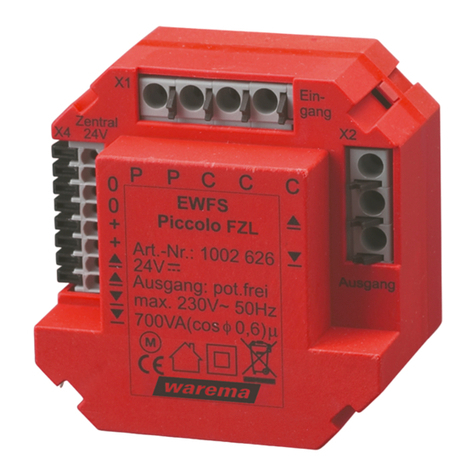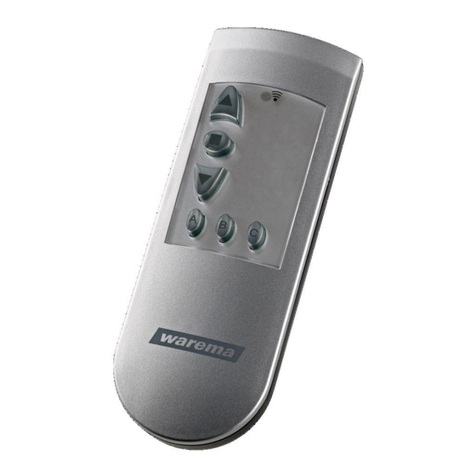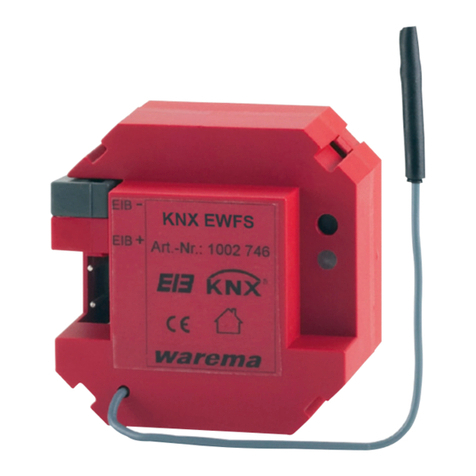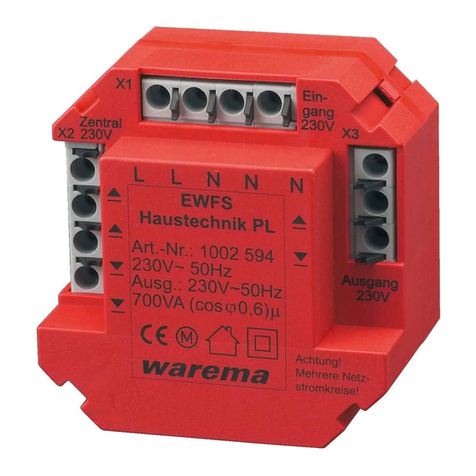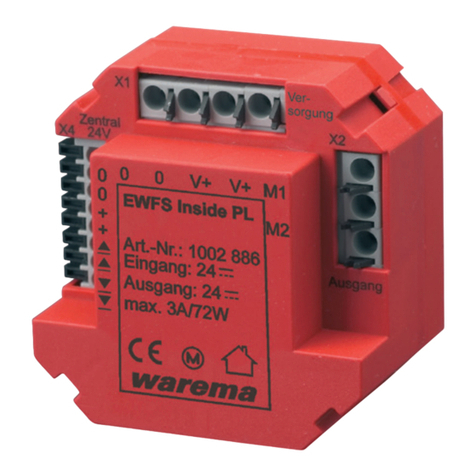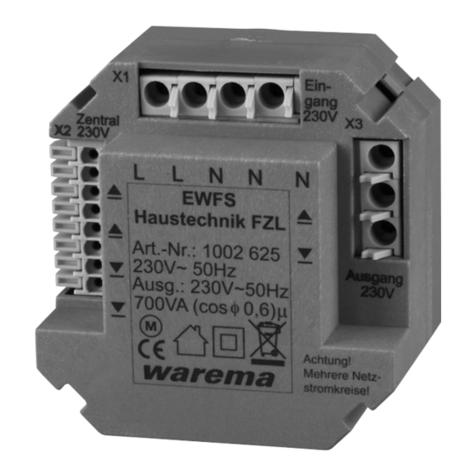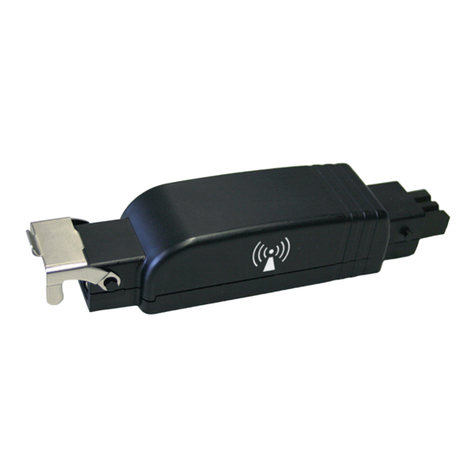
866085_g•en•2017-12-01We reserve the right to carry out improvements
4
Heartbeat function
When a weather station is learned into the device, the
heartbeat function becomes active. The weather station cy-
clically sends a so-called "heartbeat pulse" to all receivers
into which the weather station was learned. If the power
supply of the weather station fails, for example, the station
does not send a heartbeat. The receiver may also fail to
receive a heartbeat pulse from a learned weather station
when the installation situation is unfavourable. If a heart-
beat signal does fail to arrive for 24 h, this is considered
by the receiver to be a weather station failure and the sun
shading system is raised for safety reasons. In this phase,
the sun shading system cannot be operated as usual:
When it is lowered manually, the movement is stopped
automatically after approx. 5seconds. Pressing the button
again causes the same reaction. The sun shading system
can be raised as usual. This is a safety function and not
an error.
AUTIONC
If you force the sun shading system to move
down by repeatedly activating the DOWN
button when the weather station has failed,
the safety functions are not active. The sun
shading system may become damaged (e.g.
due to high winds).
Special functions
Manifold special functions are additionally possible in
WAREMA EWFS. Should you wish further information, your
specialist dealer will be pleased to give you the applica-
tion brochure.
The "A", "B" and "C" function buttons
Function button "A" of the transmitter can be used to
switched off the sun control temporarily if you additionally
use the EWFS Weather station in your system.
Temporary deactivation of the sun control:
nPress the "A" button of the transmitter and hold until
the sun shading system stops moving. Release the but-
ton again. The sun control is now switched off for 12
hours. After this period, the sun control is reactivated
again automatically.
Activate the sun control again:
nPress and hold the "A" button of the transmitter. Re-
lease the button again when the sun shading system
waves. The sun control is active again. If the automatic
system was already active, nothing changes.
The "A", "B" and "C" buttons of this transmitter have no
function.
Installation
The receiver is designed for installation in a flush-mounted
junction box 80 x 80 mm. Only lines used for the wiring
of the receiver should be routed into this box. The unit is
electrically connected according to the wiring diagram on
the reverse. The lines are connected via spring terminals.
Electrical installation
An on-site overload current disconnecting and isolating
switch to switch off the entire system must be provided.
Commissioning
Films on commissioning can be found at:
http://www.warema.de/Produkte/Steue
rungssysteme/Funksysteme/
Complete the installation and apply the supply voltage.
The device is operational.
Maintenance
There are no parts within the device that require mainte-
nance.
Liability
Failure to comply with the product information in these
instructions and use of the device in a manner that con-
travenes its intended use and purpose may result in the
manufacture refusing to honour warranty claims for prod-
uct damage. In this case, liability for consequential harm
to persons or damage to property will also be excluded.
Follow also the instructions in the operating manual of
your sun shading system. The automatic or manual opera-
tion of the sun shading system when iced over as well as
using the sun shading system during severe weather may
cause damage and must be prevented by the user by tak-
ing suitable precautions.
Disposal
After its use, the device must be disposed of according to
legal regulations or returned to your local recycling centre!
User information
The device is approved for use in the following countries:
A, B, D, DK, E, F, FIN, GB, GR, I, IRL, L, NL, P, S, CH, IS, N
.
